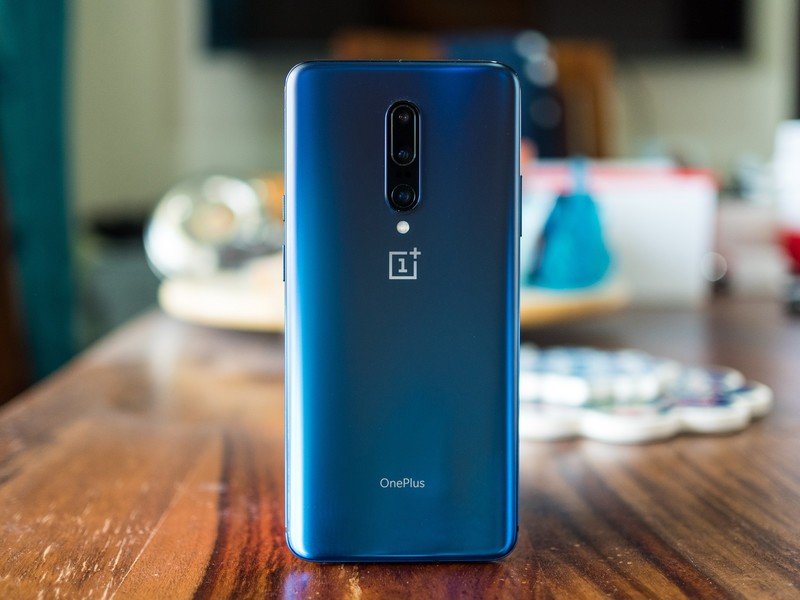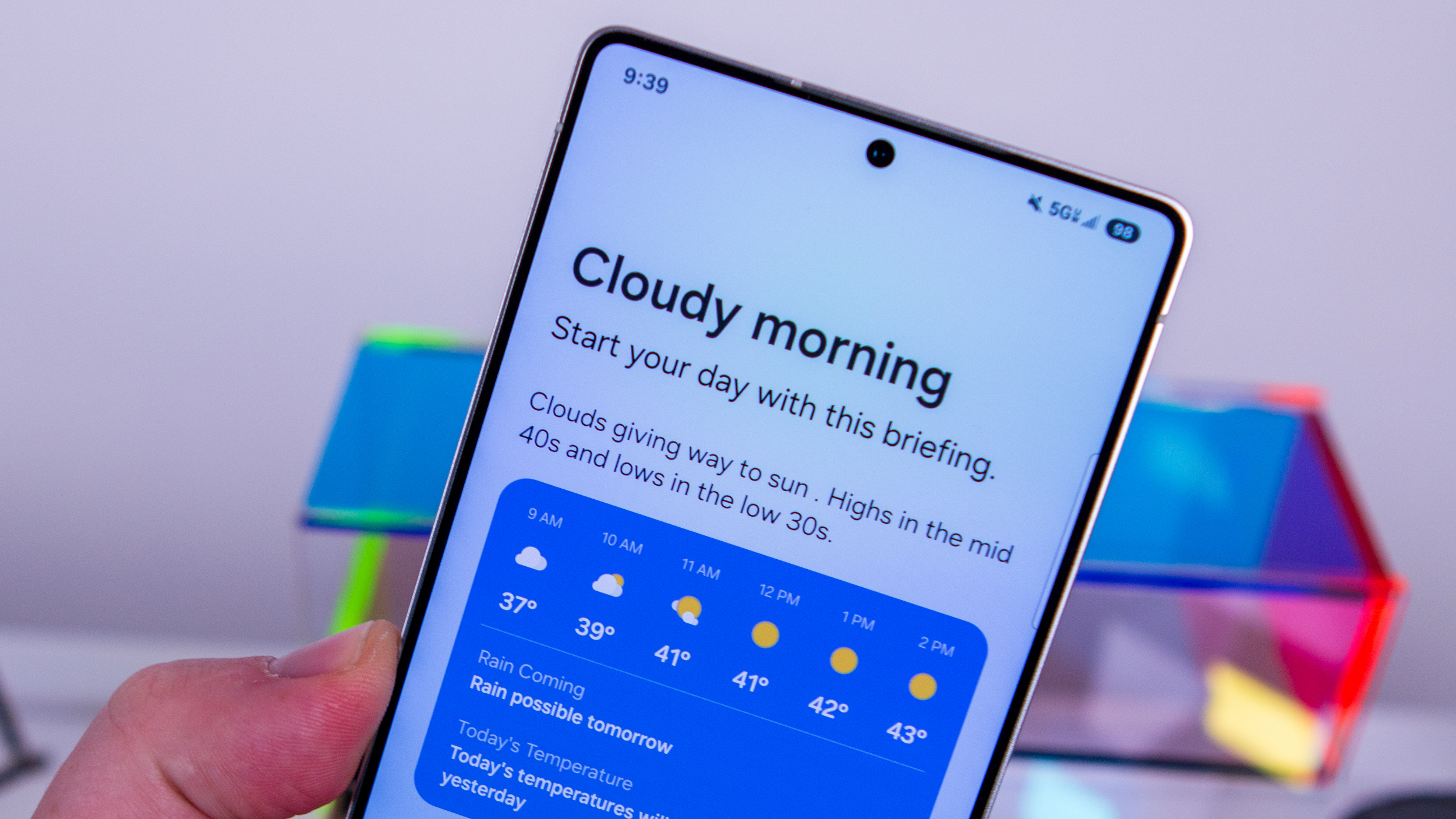Pixel 4 XL vs. OnePlus 7 Pro: Which should you buy?

Google Pixel 4 XL

The Pixel 4 XL takes Google's proven Pixel formula and cranks things up to 11. This is the first Pixel phone with a 90Hz display, dual rear cameras, and more than 4GB of RAM. We're also intrigued by the face unlock and Motion Sense hand gestures, but you'll pay a pretty penny for the privilege of having it all.
Google Pixel 4 XL
Camera king
OnePlus 7 Pro

For those of you that are a bit more budget-conscious but still want a smartphone that looks and feels like a proper flagship, the OnePlus 7 Pro may be a better fit. The cameras aren't nearly as impressive as what you'll find on the Pixel 4 XL, but you're also getting a gorgeous display, blazing-fast performance, and great software.
OnePlus 7 Pro
Value champ
While it is expensive, the Pixel 4 XL makes a hard bargain for why you should buy it. Its display is phenomenal, performance is more promising than any Pixel before it, and Google's camera prowess shines brighter than ever on the new dual-camera system. If you like the idea of the Pixel 4 XL but can't justify its price, the OnePlus 7 Pro offers a similar experience — albeit with weaker cameras — at a much lower price.
The Pixel 4 XL has an unmatched camera and Android's best face unlock system
Being the newer and more expensive of the two phones, it shouldn't come as much surprise that the Google Pixel 4 XL is the better of the two phones — at least in most regards.
First thing's first, if camera quality is important to you when buying a phone, the Pixel 4 XL is an easy choice. While it may have one less rear camera compared to the OnePlus 7 Pro, the Pixel 4 XL's images look vastly superior compared to the 7 Pro. There's a good amount of detail, colors are vibrant while still being true-to-life, and there's not a scenario that the Pixel can't handle — no matter how dark of an environment it's in.
The Google Pixel 4 XL is the better of the two phones — at least in most regards.
The primary 12-megapixel sensor on the Pixel 4 XL is what you'll be using most of the time, and this year, Google finally added a second lens to complement it. The 16-megapixel telephoto camera makes it easy to get up close and personal with subjects that are far away from you, and while this isn't anything new in the smartphone world, Google's implementation is top-notch.
Something else that's unique to the Pixel 4 XL is its Soli radar sensor. This is hidden behind the large bezel above the display, and it allows for the best face unlock we've ever seen on an Android phone.
Be an expert in 5 minutes
Get the latest news from Android Central, your trusted companion in the world of Android
Not only is the Pixel's face unlock extremely fast for bypassing your lock screen, it's also secure. In fact, it's so secure that you can use it beyond the lock screen for logging into sensitive apps (such as a password manager or your banking app) and authorizing purchases. It really is like having Apple's Face ID on an Android phone, and the day-to-day experience is magical.

Also utilizing the Soli sensors, the Pixel 4 XL features "Motion Sense" gestures. These allow you to control certain aspects of the phone by moving your hand over the screen, enabling you to silence alarms, dismiss calls, and skip through songs in a media app.
Elsewhere, the Pixel 4 XL impresses in other ways. The 6.3-inch OLED display is large and crisp thanks to the Quad HD+ resolution, and with a 90Hz refresh rate, everything from Twitter to graphically-intense games move with buttery smoothness. There's also 6GB of RAM to alleviate multi-tasking issues past Pixel devices have faced, and the unsightly notch of the Pixel 3 XL is no more.
Being a Pixel phone, the 4 XL is also first in line for software updates as they become available and is guaranteed to receive OS upgrades and monthly security patches through Oct. 2022. OnePlus has been getting better about timely updates for its phones, too, but this is an area where Google still takes the cake.
| Header Cell - Column 0 | Google Pixel 4 XL | OnePlus 7 Pro |
|---|---|---|
| Operating System | Android 10 | OxygenOS (based on Android 10) |
| Display | 6.3-inchOLEDQuad HD+90Hz refresh rate | 6.67-inchOLEDQuad HD+90Hz refresh rate |
| Processor | Qualcomm Snapdragon 855 | Qualcomm Snapdragon 855 |
| RAM | 6GB | 6GB8GB12GB |
| Storage | 64GB128GB | 128GB256 GB |
| Rear Camera 1 | 12MP main camera | 48MP main camera |
| Rear Camera 2 | 16MP telephoto camera | 8MP telephoto camera |
| Rear Camera 3 | ❌ | 16MP ultra-wide camera |
| Battery | 3,700 mAh | 4,000 mAh |
| Wireless Charging | ✔️ | ❌ |
If you want the most bang-for-your-buck, the OnePlus 7 Pro makes more sense

As much as the Pixel 4 XL gets right, there's no getting around its $999 starting price. That's a considerable jump over the 3 XL's $899 starting price and makes this year's big Pixel the most expensive one to-date.
If you're not about spending that kind of money on a new handset, the OnePlus 7 Pro may be the better fit. It's not necessarily cheap with a price tag that starts at $669, but it is considerably more affordable than what Google's offering. Despite that big of a savings, the OnePlus 7 Pro doesn't feel like a substantially lesser phone.
Despite that big of a savings, the OnePlus 7 Pro doesn't feel like a substantially lesser phone.
Hardware-wise, the OnePlus 7 Pro kills it. The glass and metal construction is about as premium as they come, and if you haven't been able to tell by now, the 6.67-inch OLED display is stunning. It's crisp, colorful, has a fluid 90Hz refresh rate, and doesn't have any bezels or notches in sight. OnePlus achieved this by utilizing a pop-up mechanism for the selfie camera, allowing it to be hidden when it's not being used.
Under the hood, the OnePlus 7 Pro has everything you could ask for in a high-end gadget. There's the same Snapdragon 855 found in the Pixel 4 XL, but the RAM starts at 6GB. You can go up to 8GB, or a whopping 12GB if you want to really push the phone to its limits. The 256GB max storage configuration is also more generous than the Pixel 4 XL's 128GB cap, and the battery is a bit bigger at 4,000mAh vs. 3,700mAh.

If there's one area where the OnePlus 7 Pro disappoints, it's the camera department. The primary, telephoto, and ultra-wide camera combo on the back sounds impressive on paper, and while the primary 48-megapixel sensor is capable of some really good shots, the other two lenses showcase a noticeable downgrade in overall image quality. It's a fairly good package that offers lots of versatility, but the Pixel 4 XL consistently takes the better pictures.
Lastly, and this might sound like a nitpick, but the OnePlus 7 Pro is almost too heavy and big to be comfortably used for long periods of time. Plus, when you add that together with the curved display, you often end up with a usability nightmare. The Pixel 4 XL is a large phone, too, but the 7 Pro feels like a legit tank in ways that other handsets don't.
Get the phone that makes sense for your wallet
At the end of the day, we think you'll be happy no matter which of these two phones you end up buying. The Pixel 4 XL is the better overall choice thanks to the vastly superior cameras, face unlock, and guaranteed updates, but it's also quite expensive.
You sacrifice a couple of things with the OnePlus 7 Pro, but you do so in exchange of saving hundreds of dollars.
Which phone is a better fit for you ultimately comes down to what features you value the most and how much you're willing to spend. Once you determine that, it should be rather clear as to which one makes the most sense for you and your lifestyle.

An impressive, powerful, and expensive flagship.
The Pixel 4 XL is, unsurprisingly, Google's most impressive Pixel to-date. Its 90Hz AMOLED display is a very welcome addition, the additional RAM has been a long time coming, and the cameras are just as impressive as ever. Add that together with the Pixel 4 XL's face unlock and Motion Sense gestures, and you end up with one of the most compelling Android flagships on the market.

High-end features for less.
If you're intrigued by the Pixel 4 XL but just can't justify its steep price tag, the OnePlus 7 Pro is a solid alternative. It also has a 90Hz AMOLED screen, along with the benefit of having virtually no bezels. Performance is also incredibly fast with there being an option to have 12GB of RAM, and OxygenOS is a joy to use. So long as you're OK with an average camera package, this is a great purchase.
Joe Maring was a Senior Editor for Android Central between 2017 and 2021. You can reach him on Twitter at @JoeMaring1.

